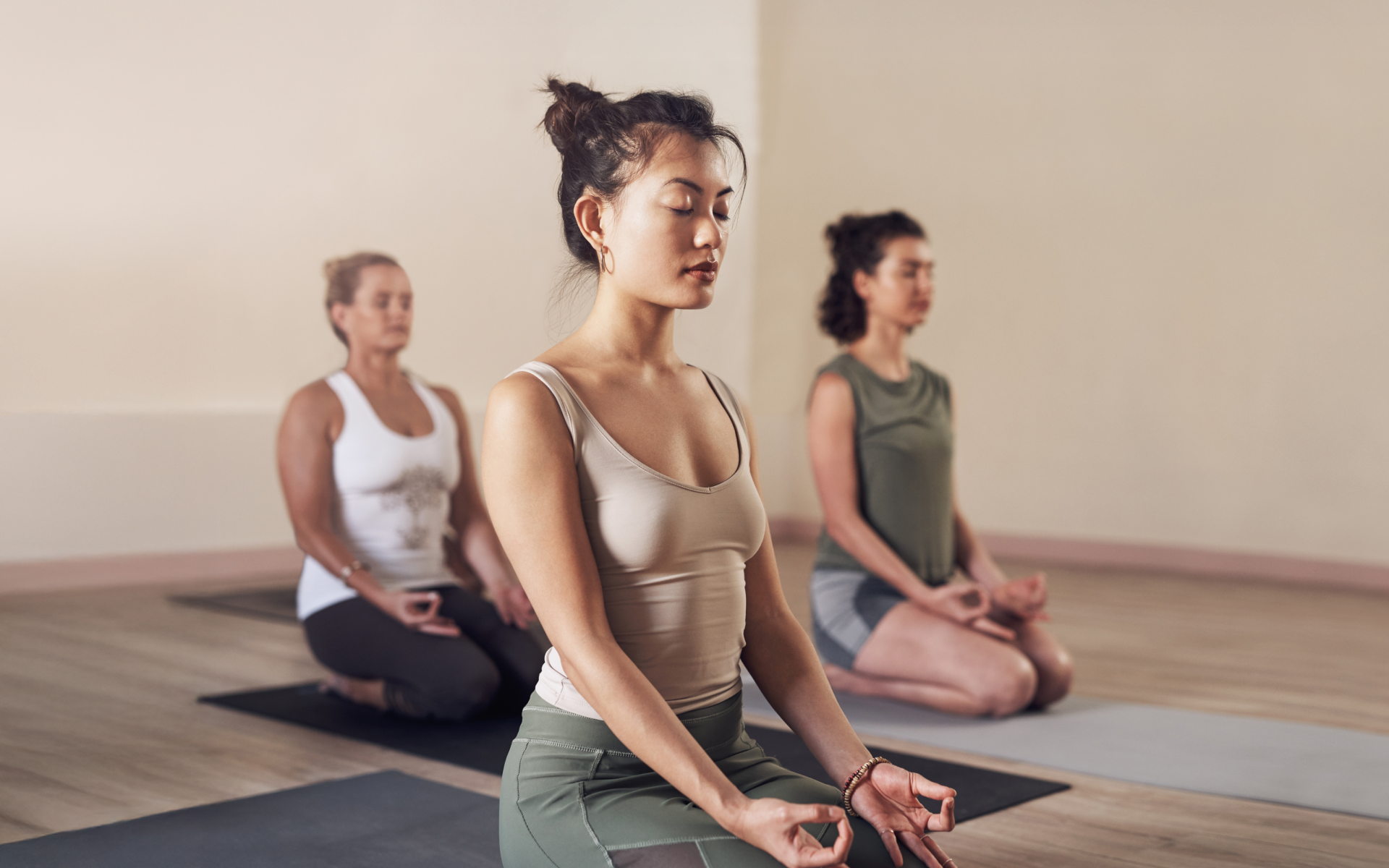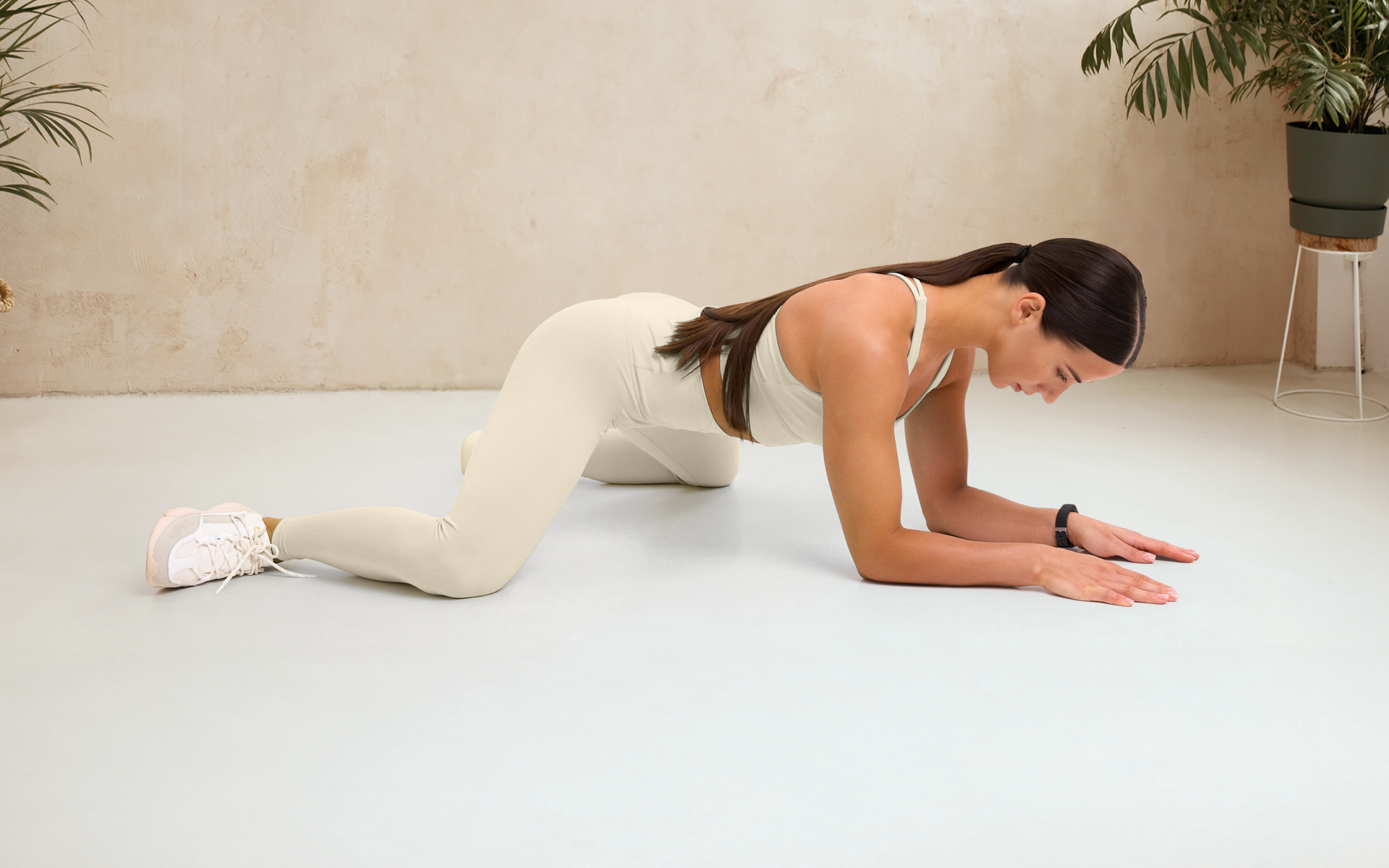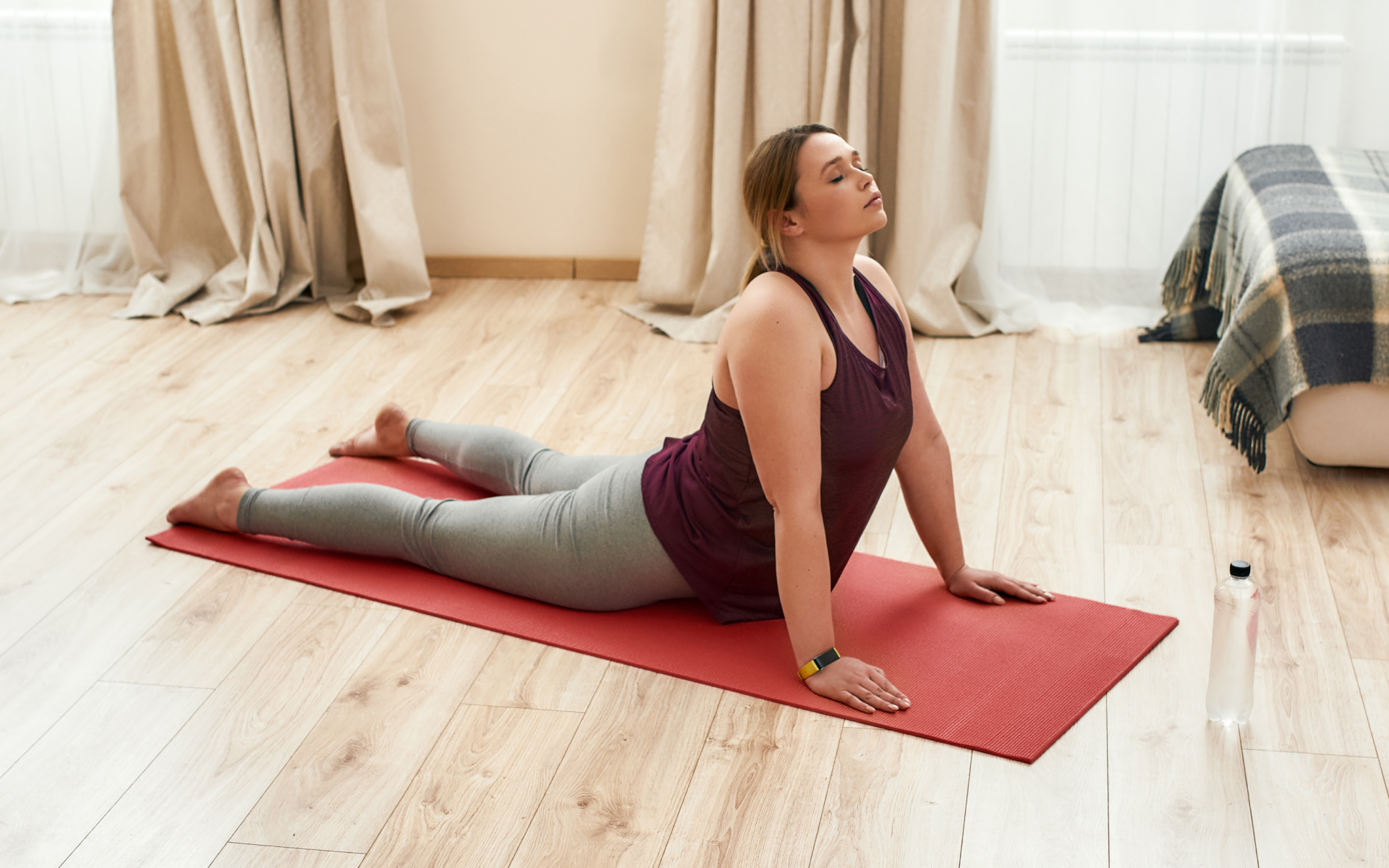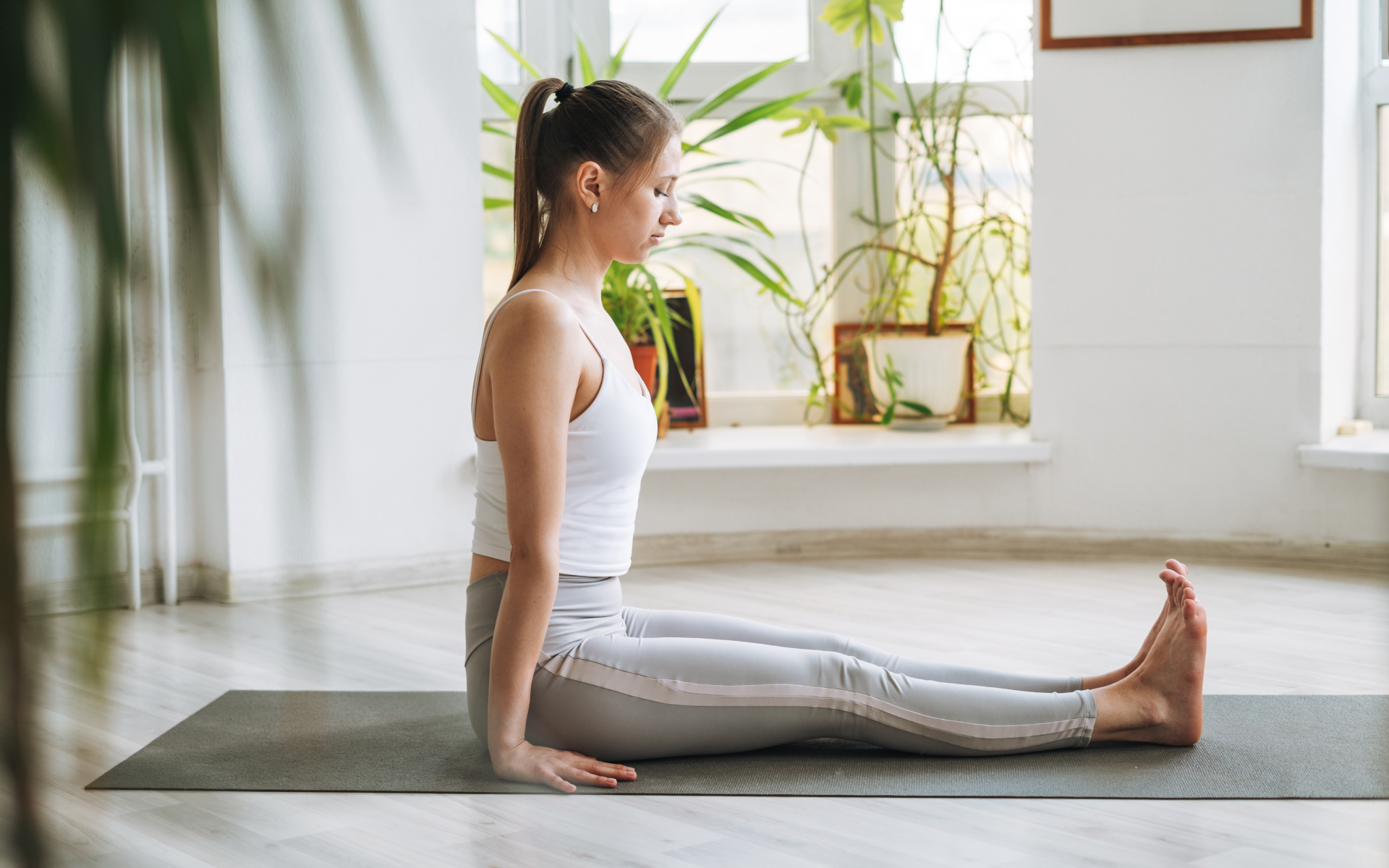Do you ever feel as if stress and emotions are overwhelming your mind and body?
Easy somatic exercises may be the solution you’ve been looking for. These practices focus on strengthening the mind-body connection, which helps you become more aware of physical sensations and the emotions linked to them. By engaging in these easy somatic exercises, you may experience reduced stress and overall better mental clarity.
Fortunately, somatic exercises are often simple and easy for beginners to incorporate into their routines. This article will examine what somatic therapy exercises look like, how you can get started, and show you 8 easy somatic exercises to consider.
What Are Easy Somatic Exercises?
Somatic exercises use movement-based practices that focus on strengthening the mind-body connection. These simple somatic exercises help individuals become more aware of their bodily sensations and the emotions that are potentially linked to them, which may lead to better emotional regulation and mental health (1).
Essentially, by focusing on how the body feels, you can release built-up tension and stress, which promotes a heightened sense of relaxation and healing. Other key benefits of easy somatic exercises include:
- Possible reduction in stress (2)
- Potential for improved emotional regulation (2)
- Potential for increased body awareness (3)
What Does Somatic Release Feel Like?
Somatic release is a therapeutic process that involves releasing stored tension, stress, and trauma from the body, and it often feels like a profound sense of relaxation and relief (4).
As you engage in somatic therapy exercises, you may notice a gradual ease of physical tension as well as a lightening of emotional burdens. However, the intensity of these sensations can vary significantly from person to person.
Common sensations that are felt during somatic release include (1)(5):
- Warm or tingling sensation in areas where tension was held
- Sense of lightness or relief in previously tense areas
- Emotional release, such as through tears or laughter
- Physical relaxation and the easing of muscle tightness
How to Start Somatic Exercises
Getting started with somatic exercises may benefit those who are looking to improve their mental and physical well-being (4), but you should know that research regarding its long-term effectiveness is still quite limited. Therefore, it’s important to approach it thoughtfully.
Before you start any new form of exercise or therapy, you should consult with a health provider to make sure it aligns with your health needs and goals. This is particularly important if you have a history of trauma and may need a therapist who specializes in somatic work. A healthcare professional can also provide personalized advice while addressing any concerns you may have.
Here are some additional tips you should consider when starting somatic exercises:
- Start slow with simple, easy-to-follow exercises that don’t require extensive physical effort to avoid feeling overwhelmed
- Create a quiet, comfortable environment where you can practice somatic exercises without interruptions
- Pay close attention to your body’s signals and stop if you experience any signs of pain or discomfort
- Stay consistent, patient, and open-minded – it may take time to feel the full benefits and discover which somatic technique works best for you
Can I Do Somatic Therapy by Myself?
Yes, you may practice somatic exercises on your own, but it’s important to consult with a healthcare professional first to make sure they align with your needs and goals.
For this type of exercise, look for somatic therapists in your area to gain more clarity. If you’re unsure where to look, the Psychology Today website has a search feature that will help you find a provider who is suitable to your needs (United States only).
Fortunately, many somatic exercises are simple enough to practice at home without the need for professional supervision. Examples of easy somatic exercises to perform at home include deep breathing, body scanning, and somatic stretching.
If you’re unsure where to start, there are plenty of online resources such as the BetterMe app that offer step-by-step, easy somatic exercises to guide you along the way.
How Often Should You Do Somatic Exercises?
The frequency of your somatic exercise plan should be dependent on your long-term health goals and needs, in addition to advice from healthcare providers. Generally, the more consistent you are with somatic exercises, the greater the benefits you’re likely to experience (6).
For beginners, starting with a few sessions per week may be beneficial. Over time, you may choose to gradually increase the duration and frequency as you become more comfortable with the exercises. It’s also important to listen to your body and adjust your somatic exercise routine to ensure it remains a positive, healing experience.
8 Easy Somatic Exercises to Improve Mental Health
Incorporating somatic exercises into your routine can significantly improve your mental well-being by building self-awareness and improving emotional regulation skills (7). Below, you’ll find 8 easy somatic exercises for beginners to consider trying.
Breathwork
Breathwork stands out as one of the best somatic exercises for managing stress and anxiety (8), mostly due to its calming effect. This practice involves focusing on each breath to soothe the nervous system, which may lead to improved relaxation and better emotional balance (9).
It’s important to note that breathing exercises work best when you focus on breathing deeply from your belly, paying close attention to each inhale and exhale. With this in mind, here are some common breathing techniques you can consider:
- Box breathing: Inhale for a count of four, hold for four, exhale for four, and hold for four, creating a box-like pattern
- 4-7-8 breathing: Inhale for four seconds, hold for seven, and exhale slowly for eight seconds
Remember that the counts that are used in these exercises are intended to guide and regulate your breath, so don’t worry if you don’t complete each count fully. The most important thing is to focus on each breath, allowing yourself to fully relax into the practice.
Body Scanning
Body scanning involves systematically focusing your attention on different parts of the body, usually from head to toe or vice versa, in order to increase body awareness (10). By focusing on each part of the body, you may identify areas of tension or discomfort, which will potentially help you become more attuned to your body’s responses and needs.
Here are the steps to a simple body scanning exercise:
- Find a quiet, comfortable space and close your eyes.
- Take several deep breaths to relax.
- Start by focusing on your toes and noticing any sensations.
- Move slowly through your feet and legs, pausing at each to observe any sensations.
- Continue scanning through your abdomen, chest, back, shoulders, arms, and hands, noticing areas of tension or relaxation without trying to change them.
- Finally, bring your attention to your neck, face, and head.
- Spend a few moments observing how your entire body feels from head to toe.
When you perform a body scanning exercise, make sure that you acknowledge any physical or emotional sensations that arise, free from judgment. Also, allow yourself to fully sit with your feelings after the exercise before you continue with your day.
Read more: Somatic Healing Techniques: A Holistic Approach to Physical and Emotional Recovery
Grounding
Grounding is a somatic practice that is designed to help individuals reconnect with the present moment by anchoring them to physical sensations (11). By directing attention away from distressing thoughts or emotions toward the here and now, grounding can promote a sense of calm and stability (12). However, its effects may differ for everyone.
Here are some popular grounding techniques you can consider:
- 5-4-3-2-1 technique: Name 5 things you can see, 4 things you can touch, 3 things you can hear, 2 things you can smell, and 1 thing you can taste.
- Mindful walking: Pay attention to each step you take, feeling the ground beneath your feet and noticing any surroundings.
- 3-3-3 rule: Name 3 things you see, name 3 sounds you can hear, and move 3 parts of your body to ground yourself in the present moment.
Resourcing
In somatic therapy, resourcing involves identifying both internal and external resources to draw upon when you feel stressed (18). This may help individuals feel more centered and present in their bodies, which may enable better decision-making and increased resilience to a variety of life stressors.
To help you get started, common resourcing methods include:
- Thinking of positive comments or affirmations from loved ones or mentors
- Listening to calming music or songs that evoke good memories
- Visualizing your favorite location or peaceful scenery
Progressive Muscle Relaxation
One of the best somatic exercises for stress is progressive muscle relaxation (PMR), which involves tensing and relaxing different muscle groups throughout the body (13). This exercise can help release built-up tension and promote relaxation by increasing awareness of bodily sensations, including the emotions that are associated with tense areas.
Here are some tips for an easy progressive muscle relaxation exercise:
- Find a quiet, comfortable space and close your eyes.
- Start with your feet, tensing the muscles in your toes for 5 seconds.
- Release the tension completely and focus on relaxing for 10-15 seconds.
- Move upward, tensing and relaxing the muscles in your legs, abdomen, chest, arms, shoulders, neck, and face.
- Focus on the sensation of warmth and heaviness in each relaxed muscle group.
- Finally, take a moment to enjoy relaxation before you resume your day.
When performing progressive muscle relaxation, take your time and avoid rushing to ensure a thorough release of muscle tension, which is essential for potential stress release.
Visualization
Visualization involves creating positive imagery in your mind to focus attention away from distressing thoughts or emotions (13). By imagining a calming, safe space in vivid detail, you can achieve emotional relief and better emotional regulation over time.
When visualizing your safe space that brings you peace, consider the following:
- Picture a place where you feel completely safe, relaxed, and at peace
- Visualize the sights, sounds, smells, and textures of this specific place
- Imagine the trusted individuals who may bring you comfort and security
As with any skill, it should be noted that visualization requires time and practice before you feel the full benefits, so don’t be discouraged if you don’t notice any immediate calming results.
BetterMe: Meditation & Sleep app can help you transmute stress into serenity, pull you up from the doldrums, free your mind from the cares and worries of the world, quell racing thoughts and infuse you with tranquility! Start using it now and change your life !
Rhythmic Movement
In somatic therapy, rhythmic movement is performed through free-flowing, repetitive motions to help center the mind and body (14). With deliberate motions designed to release stress and shift your emotional state, this practice may help you become more aware of how you experience emotions physically.
Here’s a step-by-step, easy rhythmic movement exercise to get you started:
- Select a rhythmic motion that feels natural and calming, such as walking, swaying, or gentle dancing.
- Concentrate on the sensation and rhythm of the movement, allowing it to guide your attention away from distressing thoughts.
- Coordinate your breathing with the movement, inhaling deeply and exhaling slowly to enhance relaxation.
- Keep your focus on the physical sensations of the movement, allowing any tension or stress to gradually release.
As with other somatic exercises, it’s best to practice rhythmic movement consistently in order to experience its full benefits for emotional well-being.
Mindful Yoga
Yoga can be a highly effective somatic exercise when it’s approached mindfully, particularly when combined with other somatic practices such as deep breathing. By using intentional motions to build awareness of bodily sensations, yoga can improve the mind-body connection while potentially alleviating stress (15).
However, it’s important to note that yoga is only a somatic workout when it’s focused on how you feel during movement – rather than outcomes or appearance-related goals.
Read more: Somatic Dance: Liberation through Expression and Movement
FAQs
Do somatic exercises really work?
Yes, somatic exercises may be effective for improving body awareness, reducing stress, and enhancing emotional regulation abilities by connecting physical sensations with emotional experiences (1). However, while current research on somatic techniques is promising, more studies are needed to confirm its effectiveness.
To get the most benefits from somatic therapy exercises, remember to be patient and consistent with your routine, and experiment with various somatic exercises to find which works and feels best for you.
Can you teach yourself somatic therapy?
Yes, you can learn basic somatic therapy techniques from resources such as books, online courses, or instructional videos. However, it’s always best to consult your healthcare provider before you start any new form of exercise or therapy to ensure it is in alignment with your individual health needs and goals.
Is tapping somatic therapy?
Yes, tapping (or emotional freedom techniques, EFT) is a form of somatic therapy, as it involves tapping on specific points on the body while focusing on emotional sensations to release tension and promote healing (16).
What is somatic stretching?
Somatic stretching focuses on gentle stretches and movements to release tension that’s held in muscles and joints. Somatic practices can improve body awareness and they may also be beneficial for those managing chronic pain or joint discomfort (17).
The Bottom Line
These easy somatic exercises can be highly beneficial for those who are looking to enhance their mental well-being while reducing stress and tension. By connecting physical sensations to internal emotions, somatic therapy can help you better regulate your feelings and cope with them in a healthier way.
DISCLAIMER:
This article is intended for general informational purposes only and does not serve to address individual circumstances. It is not a substitute for professional advice or help and should not be relied on for making any kind of decision-making. Any action taken as a direct or indirect result of the information in this article is entirely at your own risk and is your sole responsibility.
BetterMe, its content staff, and its medical advisors accept no responsibility for inaccuracies, errors, misstatements, inconsistencies, or omissions and specifically disclaim any liability, loss or risk, personal, professional or otherwise, which may be incurred as a consequence, directly or indirectly, of the use and/or application of any content.
You should always seek the advice of your physician or other qualified health provider with any questions you may have regarding a medical condition or your specific situation. Never disregard professional medical advice or delay seeking it because of BetterMe content. If you suspect or think you may have a medical emergency, call your doctor.
SOURCES:
- Somatic experiencing – effectiveness and key factors of a body-oriented trauma therapy: a scoping literature review (2021, nih.gov)
- Effect of Somatic Experiencing Resiliency-Based Trauma Treatment Training on Quality of Life and Psychological Health as Potential Markers of Resilience in Treating Professionals (2018, frontiersin.org)
- The Four-Cluster Spectrum of Mind-Body Interrelationships: An Integrative Model (2019, nih.gov)
- What is somatic therapy? (2023, health.harvard.edu)
- Therapeutic Sensations: A New Unifying Concept (2020, nih.gov)
- Suggested Schedule for Doing Somatic Exercises (n.d., somatics.org)
- A Mixed-Methods Study Protocol for Soma Experiencing Motion Program (Soma e-motion Program): The Effectiveness of Contemplative Movement for Emotion Regulation (2021, nih.gov)
- Breathwork Interventions for Adults with Clinically Diagnosed Anxiety Disorders: A Scoping Review (2023, nih.gov)
- The Effect of Diaphragmatic Breathing on Attention, Negative Affect and Stress in Healthy Adults (2017, nih.gov)
- How to Do a Body Scan Meditation (and Why You Should) (2022, Healthline)
- Grounding Techniques for Anxiety (2023, Meridian University)
- Grounding techniques: Step-by-step guide and methods (2023, medicalnewstoday)
- Effectiveness of Progressive Muscle Relaxation, Deep Breathing, and Guided Imagery in Promoting Psychological and Physiological States of Relaxation (2021, nih.gov)
- A Somatic Movement Approach to Fostering Emotional Resiliency through Laban Movement Analysis (2017, nih.gov)
- Exploring the therapeutic effects of yoga and its ability to increase quality of life (2011, nih.gov)
- Emotional Freedom Technique (EFT): Tap to relieve stress and burnout (2023, nih.gov)
- Moving With Pain: What Principles From Somatic Practices Can Offer to People Living With Chronic Pain (2021, nih.gov)
- Resourcing, Pendulation and Titration: Practices from Somatic Experiencing (2018, Sarah Ross PhD)








